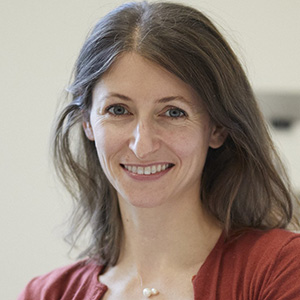Molecular movement and compartmentalization — Contacts, transporters and nanodomains
Advanced high-resolution tools have enriched our understanding of tissue, cell and subcellular heterogeneity, highlighting the need to unravel the mechanisms governing the movement of small molecules within and between cellular compartments. This theme integrates insights into the establishment, maintenance, and regulation of spatial heterogeneity and the dynamics of molecular transfer. It highlights the impacts of disrupted metabolic compartmentalization in human disease, emphasizing the roles of solute carriers and molecular transfer across organelle contact sites.
Organizers

Nora Kory
Harvard T.H. Chan School of Public Health

Tim Levine
University College London
Symposia
Inter-compartment communication through direct contact
- Identifying the components of membrane contact sites without doing any experiments
Tim Levine, University College London - How and why do bridge-like lipid transport proteins regulate in the intracellular distribution of phosphatidylethanolamine?
Will Prinz, University of Texas Southwestern Medical Center - Mechanisms maintaining cellular lipid balances
Rachid Thiam, French National Centre for Scientific Research and École Normale Supérieure in Paris - Lipid transporters that build the outer membrane of gram-negative bacteria
Natividad Ruiz, Ohio State University
Molecular movement by transporters
- Orchestrating metabolic complexity — Mitochondrial transporters and the control of cellular metabolism
Nora Kory, Harvard University - Mitochondrial metabolite compartmentalization in health and disease
Shingo Kajimura, Harvard University; Howard Hughes Medical Institute - Mechanistic studies of small substrate transporters
Heather Pinkett, Northwestern University - The role of protons in synaptic vesicle glutamate transport
Robert Edwards, University of California, San Francisco
Metabolic heterogeneity across scales — from nanodomains to whole tissues
- cAMP nanodomain signaling at membrane contact sites
Manuela Zaccolo, Oxford University - Tumor biochemistry in personalized cancer care
Nathalie Agar, Harvard Medical School - Control of trafficking of ER membrane proteins by the mitochondria
Gyorgy Hajnoczky, Thomas Jefferson University - Illuminating the biochemical activity architecture of the cell
Jin Zhang, University of California, San Diego
Other sessions
These sessions and activities will also be of interest. See the full program schedule for details on these and the rest of the ASBMB Annual Meeting.
Featured speakers
- Persistence and serendipity in science: a poker analogy
Melissa J. Moore, University of Massachusetts Chan Medical School - Novel GABA aminotransferase and ornithine aminotransferase inactivators as potential new treatments for epilepsy, pain and hepatocellular carcinoma
Richard Silverman, Northwestern University - Phase separation in cells: Insights from biophysical computations
Rohit V. Pappu, Washington University in St. Louis
Meetups
- Cell and developmental biology
- Glycobiology and extracellular matrices
- Industry scientists and industry interest
Interest group sessions
- Cell–environment interactions in health and disease
- Glycobiology for women's health
- Multifaceted mitochondria
- The dynamic actin cytoskeleton in cancer metastasis
Workshops
Poster sessions
- Cell biology
- Cell and developmental biology
- Glycobiology and extracellular matrices
- Neurobiology
Events
- ASBMB welcome address
- Career and education fair
- Emerging investigator seminar
- Undergraduate poster competition




